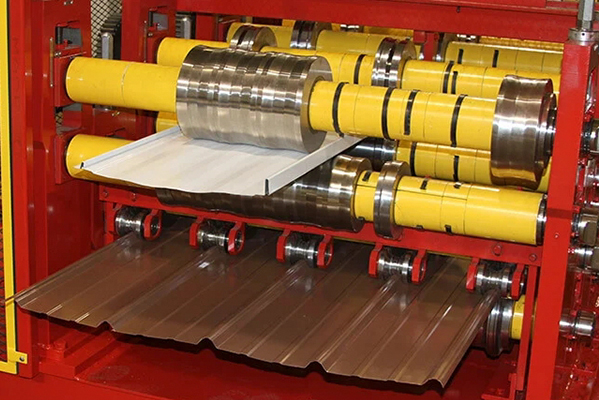Navigation Menu
Contact Us
- Email:
- info@wxavatar.com
- Address:
- Yurong Village, Yuqi Street, Huishan District, Wuxi, China.
Release Date:Apr 22, 2025 Visit:68 Source:Roll Forming Machine Factory
Roll forming is a metal processing technique that continuously shapes metal strips into specific profiles. Different materials have different properties, so choosing the right one ensures a strong and durable final product. Let’s take a look at the most commonly used materials in roll forming.

1. Carbon Steel
Carbon steel is the most widely used material—it’s affordable, strong, and easy to work with. Depending on carbon content, it comes in different grades, with high-carbon steel being harder but less flexible. It’s often used in automotive parts, building frames, and shelving.
2. Stainless Steel
Stainless steel’s biggest advantage is its rust resistance, making it ideal for damp or corrosive environments. Common applications include food processing equipment, medical devices, and architectural trim. The most popular grades are 304 and 316, with 316 offering better corrosion resistance but at a higher cost.
3. Aluminum
Aluminum is lightweight, rust-resistant, and easy to shape, making it great for weight-sensitive applications. It’s commonly used in aircraft components, automotive parts, and window/door frames. Different alloys, like 3003 (softer) and 5052 (stronger), offer varying properties.
4. Galvanized Steel
Galvanized steel is carbon steel coated with zinc for extra rust protection. It’s often used in roofing, ventilation ducts, and outdoor structures where exposure to weather would cause regular steel to rust faster.
5. Copper & Brass
Copper and brass conduct electricity well and have a premium look, so they’re used in electrical components, decorative trim, and plumbing fittings. However, they’re more expensive, so they’re only chosen for specialized needs.
6. High-Strength Low-Alloy (HSLA) Steel
HSLA steel is stronger than regular carbon steel but still easy to form. It’s ideal for applications where both lightweight design and high strength are needed, such as automotive frames and heavy machinery.

Conclusion
Choosing the right material for roll forming depends on the product’s intended use. Carbon steel is cost-effective, stainless steel resists rust, aluminum is lightweight, and copper conducts electricity well. Picking the right material ensures a durable and cost-efficient result.